Peoria Audubon Society is a local affiliate of both:
National Audubon Society & Illinois Audubon Society

Birding the Illinois River
Catch the Fall Shorebird Migration - 2011
Photo Gallery:
Saturday August 20, 2011 Next Page 1 2
Maury Brucker of Peoria Audubon and Mike Miller of the Peoria Park District joined forces to host a birding trip along the Illinois River south of Peoria. Timing was set to capture the peak migration of shorebirds; known for their very long distance migrations. According to Maury, as a group, shorebirds make up the farthest traveled migrants of the different groups of birds. Many of them start in the arctic tundra and continue migrating toward the southernmost points of South America.
Dennis Endicott of the Peoria Audubon Society was along to assist the tour leaders and to take a few photos to share with the group.
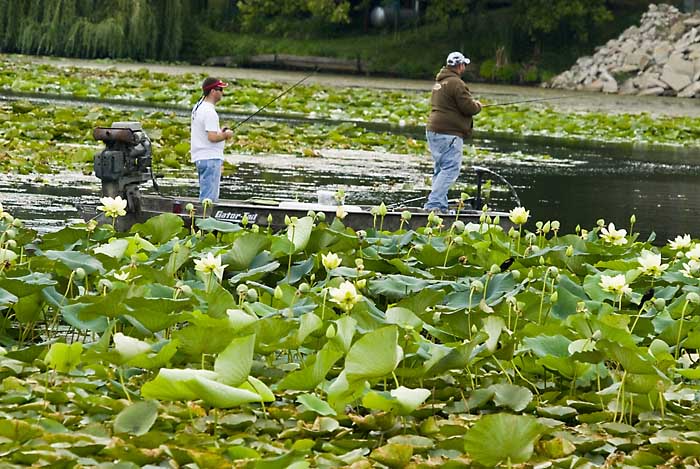
Fishermen, Yellow Lotus Blossoms, and Blackbirds at Spring Lake
One of our first stops was at Spring Lake, the Yellow Lotus, also known as the American Lotus were bloomed. This year, a drop in lake levels caused many of the large floating leaves to become upturned in a dense growth. Although somewhat difficult to see in the above image, two Red-winged Blackbirds are perched on two of the lotus blossoms.
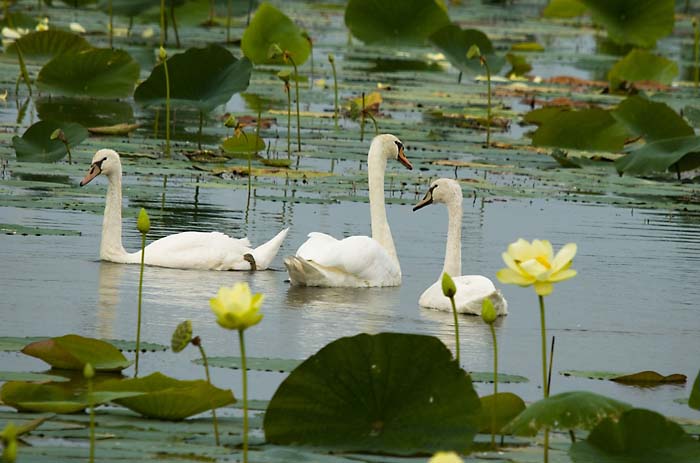
Group of Mute Swans at Spring Lake
Maury indicated that the Mute Swans, which are native to Europe, are not native to the United States. In many areas of the USA, this introduced species is becoming problematic as they are large birds and more aggressive than native ducks and geese. Subsequently, their large size in combination with their aggressiveness, may cause them to displace native species from their habitat.
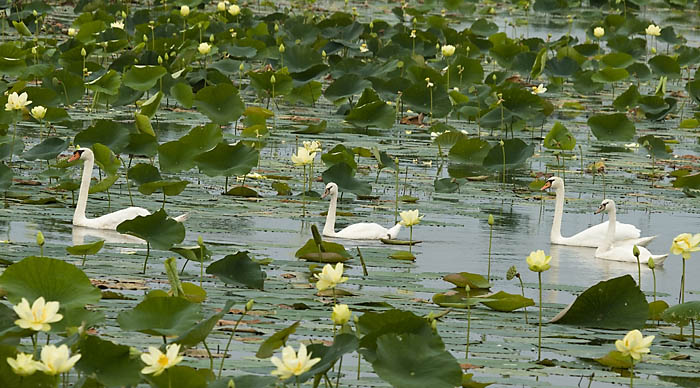
Family of Mute Swans at Spring Lake
As the Mute Swans multiply within their introduced ranges, and start to displace populations of native species, at some point interventions, such as hunting, may become an option. One of the concerns is that if hunting of Mute Swans becomes an option, other swan species may be mistaken.
In the above photo, note the slightly grayish bills of the smaller cygnets (young swans). These two young Mute Swans very likely hatched and fledged this year.
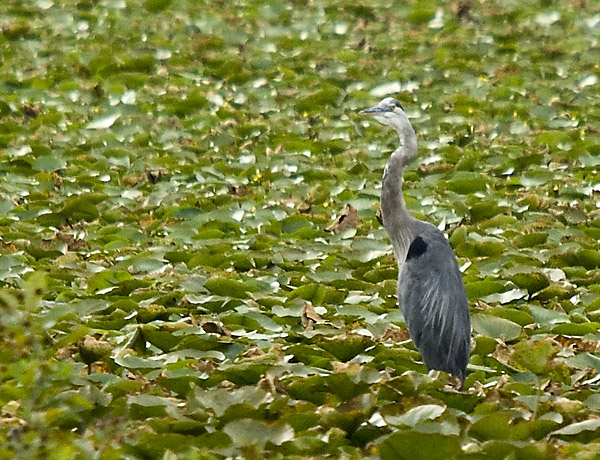
Great Blue Heron in Yellow Lotus at Spring Lake
On one side of Spring Lake, the density of Yellow Lotus blooms seemed especially dense. Note the Great Blue Heron in the above photo. The upward tilting leaves are an indication of the reduced water level.
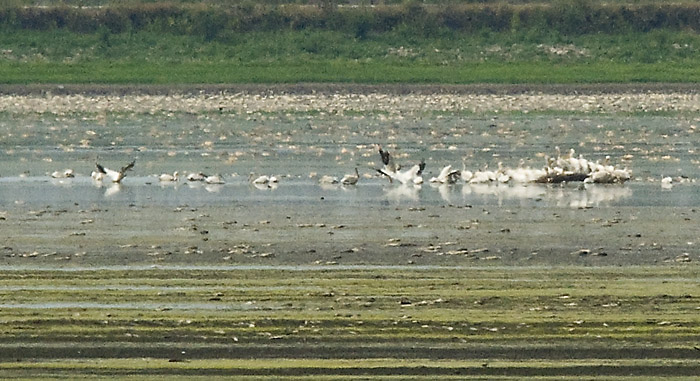
Distant White Pelicans at [drawn down] Lake Chautauqua
After Spring Lake, we visited Lake Chautauqua, which is part of the Chautauqua National Wildlife Refuge. At Lake Chautauqua, the 1200-acre North Pool was being drawn down to reduce the preponderance of invasive asian carp species. Earlier, the 2100-acre South Pool had the water raised to reduce the density of willow species around the shoreline.
In the above photo distant (perhaps 1/2 to 1-mile) White Pelicans were likely to be dining on the abundance of dead carp
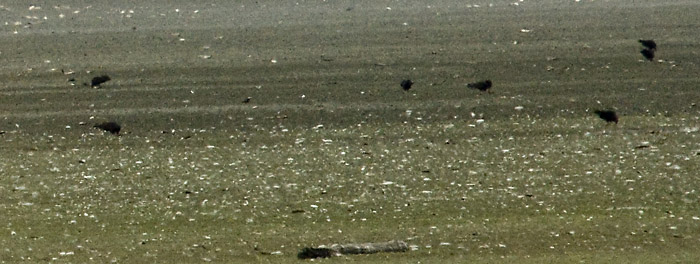
Distant Turkey Vultures Eating Dead Carp at Lake Chautauqua
In another area of the drawn down lake, Turkey Vultures, in particular, were clearly feasting with the bounty of dead carp. We saw perhaps 20-30 Turkey Vultures across the lake. Knowing a good thing when they find it, this was one of the largest abundances of Turkey Vultures in one spot we had seen in a while.
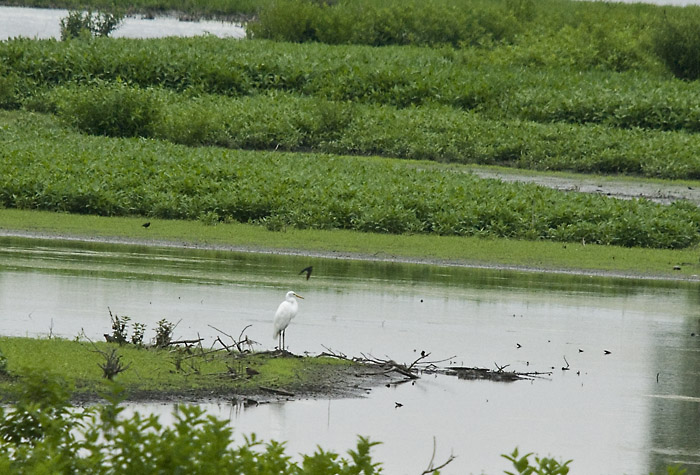
Great Egret at Lake Chautauqua
Walking past another part of the North Pool at Lake Chautauqua, where tributaries bring water to the area, a Great Egret stalked the area for the potential fish dinner.
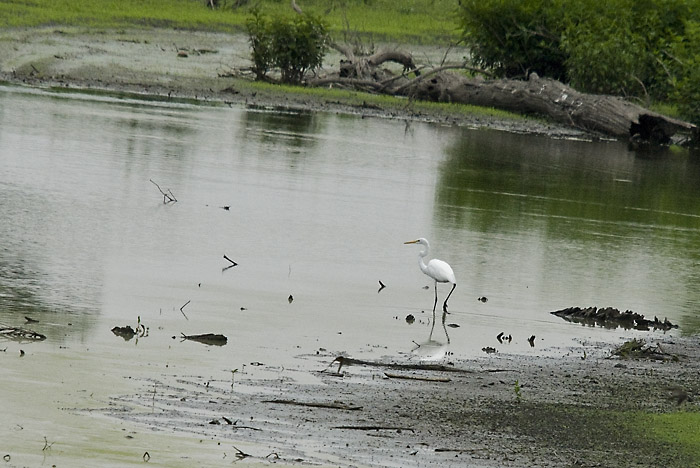
Great Egret at Lake Chautauqua
The shallow water from the draw down process provided a good habitat for another Great Egret
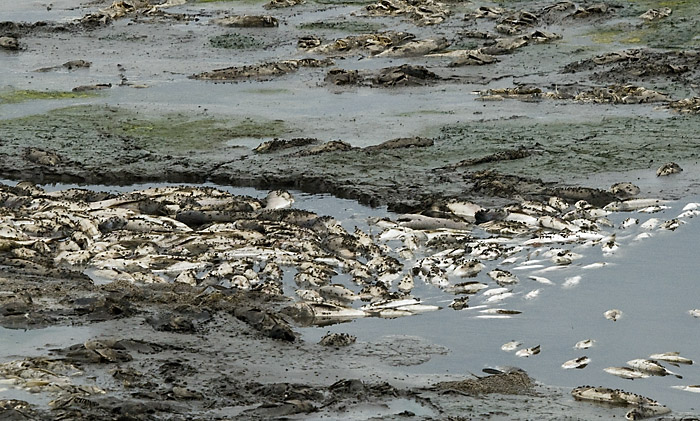
Dead Asian Carp Near Cross-dike at Lake Chautauqua
As we continued our tour of Lake Chautauqua, we next went to the south side of the North Pool by the cross-dike. At this location, we were closer to large numbers of carp that had only recently died. With a slight breeze from the north, we were suddenly quite clear as to why many of the residents of Goofy Ridge were complaining about the smell. As the carp decomposed, the process was beyond the well-known fishy smell of fatty acid decomposition. The carp decomposition had progressed to an amine-like smell. As the fish protein decomposes, the nitrogen rich amino acids were breaking down to volatile amines. There was no hesitation about leaving this time.
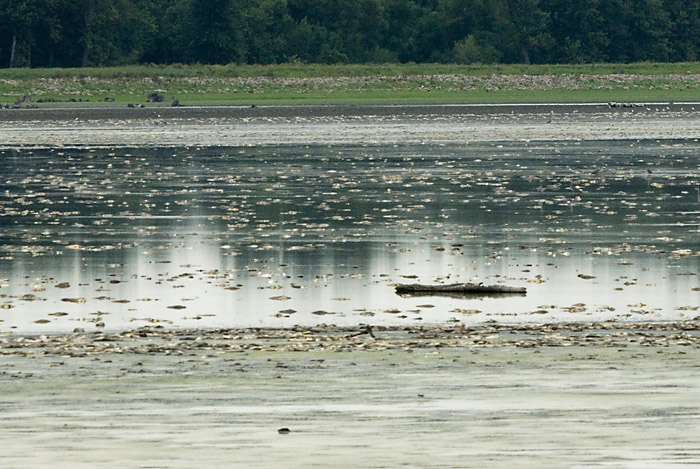
Dead Asian Carp Resulting from Lake Drawdown at Chautauqua
Another distant view of the dead carp is in the above photo. From this location, we proceeded toward Havana, IL where we went to look at the shorebirds in the Sand Lakes.
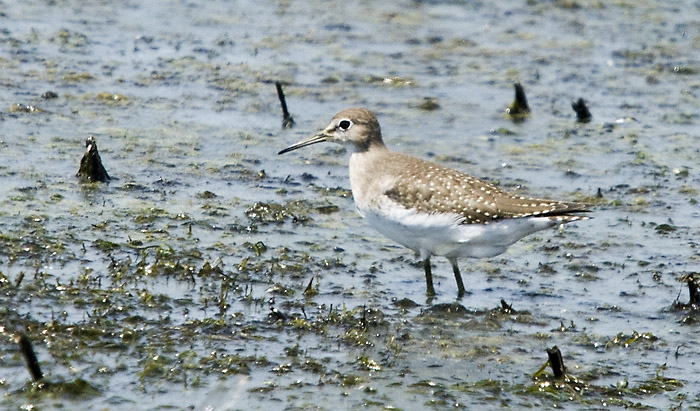
Solitary Sandpiper at Sand Lake near Havana, IL
Many of the shorebirds were too distant to get a good picture. However, the Solitary Sandpiper in the image above was a lot closer for the birders to see.
More photos are on the next Gallery page.
Photos courtesy of Dennis Endicott - All rights reserved